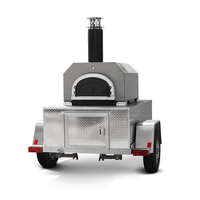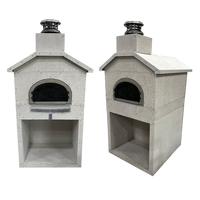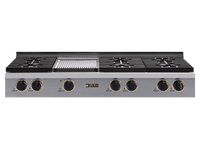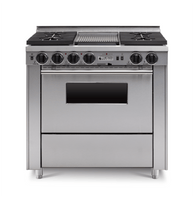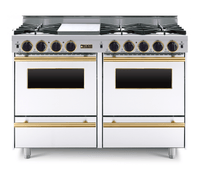Detroit-Style vs. Chicago Deep Dish Pizza: A Culinary Showdown
Among pizza aficionados, few topics ignite as passionate a debate as the rivalry between Detroit-style and Chicago deep dish pizza. These two icons of the pizza landscape each present a distinctive approach that has enchanted countless fans.
Although both varieties share a deep, robust crust and generous layers of cheese, they diverge in several key aspects. In this article, we will explore the origins of Detroit and Chicago pizza and highlight the top five differences that distinguish these beloved styles from one another.

Origins and Style
Before delving into the origins of these two iconic pizzas, it is essential to acknowledge the significant influence of New York City in introducing Italian pizza culture to the United States. The roots of New York-style pizza can be traced back to the early 20th century when Italian immigrants brought their pizza-making traditions to American soil. Lombardi’s, recognized as the first pizzeria in the United States, opened its doors in New York City in 1905 and is credited with popularizing the distinctive New York-style pizza.
In contrast, the deep-dish Chicago pizza has a relatively more recent origin. Pizzeria Uno in Chicago is often hailed as the birthplace of this unique pizza style, developing its first deep-dish variant in the 1940s. This style gained traction in Chicago during the mid-20th century, emerging from the creative efforts of Italian immigrants who aimed to craft a pizza that resonated with the working-class population. Characterized by its thick, doughy crust and generous toppings, Chicago-style pizza quickly gained fame.
Detroit pizza, on the other hand, presents a more contemporary narrative. This style is intrinsically linked to the city of Detroit—often referred to as Motor City—and is believed to have been developed in the mid-20th century. The rectangular, deep-dish pizzas with a thick, crispy crust became increasingly popular in Detroit during the 1940s and 1950s. According to legend, the inception of this pizza style was driven by necessity; chefs utilized deep, rectangular pans—originally intended for holding spare parts during assembly line production. The sides of these pans were coated in butter, allowing the crust to achieve a delightful crispness, which has become a signature characteristic of Detroit-style pizza.
Despite some outward similarities, Detroit and Chicago pizzas differ significantly in many respects. The most notable distinction lies in the pans used for cooking—Detroit pizza is prepared in shallow rectangular pans, while Chicago pizza is crafted in deep-dish round pans. Additionally, Detroit-style pizza tends to be thinner, offering a crispy and chewy texture, as opposed to Chicago's renowned thick, doughy crust, which can rise to an impressive two inches in height. This contrast epitomizes the essence of both styles, each remarkable in its own right.
Exploring the Top 5 Distinctions Between Chicago Deep Dish and Detroit-Style Pizza
1. Crust: Deep Dish vs. Detroit-Style
- Chicago (The Deep-Dish Dynasty):
Chicago's deep-dish pizza is a culinary icon, renowned for its thick, buttery crust that serves as a sturdy cradle for a deliciously rich sauce and generous layers of cheese. This crust, characterized by its indulgent texture, is crafted from a blend of flour, cornmeal, and butter, offering a solid foundation for denser toppings. Many aficionados argue that the crust itself could be considered a standalone dish—a buttery canvas for exquisite culinary creativity.
- Detroit (The Motor City Marvel):
In contrast, the Detroit-style pizza presents a distinctive square pie with a thicker, crispy, and chewy crust that acts as a flavor reservoir. Baked in a square pan, this unique preparation creates irresistibly crunchy edges, reminiscent of a delightful fusion between pizza and panini. The crust is formulated with a high-hydration dough, resulting in a golden, caramelized exterior that provides a satisfying crunch with each bite.
2. Cheese Chronicles: Chicago vs. Detroit
- Chicago (The Cheese Monarch):
Within the realms of Chicago's deep-dish pizza, mozzarella stands as the undisputed champion of cheese. It is strategically placed beneath the red sauce to prevent burning during the lengthy baking process required for this style of pizza. Typically made from whole milk, this mozzarella contributes a creamy richness to the already decadent pie.
- Detroit (The Covert Cheese):
Conversely, Detroit-style pizza takes a more subtle approach to cheese. Here, it lies concealed beneath the sauce, creating a delightful meld of textures and flavors. It's akin to a clandestine pizza society in which the cheese, often a blend of Wisconsin brick and provolone, works quietly to enchant your palate. This hidden layer yields a gooey, melty experience that seamlessly integrates with the crust, while the provolone imparts a tangy sharpness that enhances the overall tasting profile of this traditional style. In conclusion, while both Chicago deep-dish and Detroit-style pizzas boast unique characteristics that elevate them to their respective culinary heights, they ultimately provide distinctive and satisfying experiences for pizza enthusiasts.
3. Sauce Sensations: A Contrast of Chicago's Chunky Tomato Tango and Detroit's Saucy Smooth Operator
In Chicago-style pizza, the sauce is a vibrant celebration of chunky tomatoes, garlic, and oregano. This robust, zesty blend often boasts a heartier texture than that of a typical summer salsa, allowing the tomatoes to take center stage. Their freshness brilliantly cuts through the richness of the cheese and the substantial crust, creating a well-rounded and invigorating flavor experience.
Conversely, Detroit-style pizza opts for a smoother sauce that envelops the pizza in a velvety layer of rich tomato goodness. This sauce tends to be more refined, occasionally with a touch of sweetness, and is delicately seasoned to complement rather than dominate. It serves as a harmonious counterpart to the crispy crust, contributing to a delightful interplay of textures in every bite.
4. Topping Territory: Edge-to-Edge Versus Center Stage
In the realm of toppings, Chicago-style deep-dish pizza offers a veritable playground of flavors. From classic selections like sausage and pepperoni to more gourmet options such as spinach and artichoke, the Windy City excels at saturating each pizza with a vibrant array of toppings. Each slice becomes a flavor explosion, showcasing an enticing mix of colors and tastes.
In contrast, Detroit-style pizza adopts a more measured approach to toppings. While flavor is certainly embraced, toppings are typically concentrated in the center, ensuring that each bite captures the essence of every selected ingredient. This approach emphasizes simplicity and balance, providing a refined palate experience.
5. Serving Style: Slices vs. Squares
- Chicago (Slice of Skyline):
Chicago-style pizza is presented in substantial slices that necessitate the use of a fork and knife. Each slice is a robust meal in its own right, inviting diners to savor a depth of flavor that deserves to be experienced at a leisurely pace.
- Detroit (Square Dance):
Conversely, Detroit-style pizza is served in distinct squares, making it an ideal choice for sharing – though we certainly won’t judge if you wish to keep it all to yourself. The square slices provide a delightful crunch and achieve an impeccable balance of toppings to crust in every single bite.
Comparative Analysis of Ingredient Distinctions between Detroit and Chicago-style Pizza
While Detroit and Chicago pizzas exhibit certain similarities, they also possess significant differences that distinguish them. These differences are largely attributed to the ingredients utilized in each style.Both pizzas utilize a similar dough recipe comprising flour, yeast, salt, and water. However, Detroit pizza dough is characterized by a higher hydration level, resulting in a lighter and airier texture compared to its Chicago counterpart. In terms of cheese, Detroit-style pizza traditionally employs Wisconsin brick cheese, whereas Chicago-style pizza typically incorporates a blend of mozzarella and provolone cheeses.
The unique rectangular shape of Detroit pizza is a result of its preparation in a steel or aluminum pan, leading to a thick crust that is crispy on the outside yet soft on the inside. Notably, the toppings on Detroit pizza are arranged in reverse order, with cheese layered beneath the sauce, contributing to its signature caramelized and crispy edges.On the other hand, Chicago-style pizza, often referred to as “deep dish pizza,” features a deep, dense crust that is baked in a high-sided pan. This style is known for its substantial layers of cheese, sauce, and toppings, necessitating a longer baking time.
The crust achieves a crispy exterior while remaining soft on the inside, and it is typically overwhelmed with cheese and a rich sauce that may overflow the edges.When it comes to pizza sauce, Detroit-style sauce is generally a touch sweeter, crafted from canned tomatoes, while Chicago-style sauce is thick and chunky in texture. In terms of toppings, Detroit pizza tends to have a uniform layer, whereas Chicago pizza is renowned for its generous array of toppings.
A popular choice for Chicago-style pizza is crumbled Italian sausage, while Detroit pizza often highlights pepperoni or bacon as its main topping. Overall, these foundational ingredients and preparation techniques clearly delineate the characteristics of each style, contributing to their unique identities within the realm of pizza.
The Art of Cheese Placement
In both Chicago and Detroit-style pizzas, the strategic decision to position the cheese beneath the toppings and sauce is far from arbitrary; it serves a highly functional purpose. In the case of the Chicago deep-dish pizza, this approach forms a protective barrier that prevents the crust from becoming excessively soggy, ensuring a harmonious interplay of textures. The creamy melt of the mozzarella seamlessly blends with the toppings and sauce, resulting in a symphony of flavors.
Similarly, in Detroit-style pizza, the placement of cheese operates like a culinary illusion. By concealing the cheese beneath the sauce, the combination of Wisconsin brick cheese and provolone delivers a delightful surprise to the palate, balancing sharpness with richness. Here, the cheese acts as a subtle enhancer, amplifying the overall experience without overshadowing the other components.
Ultimately, whether you are indulging in the mozzarella marvel of Chicago or the rich provolone blend of Detroit, the cheese in these iconic styles is indispensable in crafting a remarkable pizza experience. So, to all cheese enthusiasts, savor each bite and embrace the delicious rivalry that exists between Chicago and Detroit pizza!
Selecting Your Preferred Pizza Style
As the ongoing debate between Chicago and Detroit pizza intensifies, it's evident that each city has developed its own distinct pizza character. Whether you relish the chunky tomatoes of Chicago or the hidden richness of provolone in Detroit, one thing is undeniable: pizza enthusiasts have much to celebrate in both of these iconic styles. Detroit and Chicago pizzas each offer unique and delectable experiences.
If you lean towards the crispy and chewy texture of Detroit-style pizza or favor the hearty, doughy crust of Chicago-style, there is no arguing that both varieties are cherished by pizza aficionados around the globe. Regardless of your personal preference, both Detroit and Chicago pizzas serve as excellent options that are sure to satisfy your cravings.
In conclusion, whether you align yourself with #TeamChicago or #TeamDetroit, one thing remains certain: the pizza landscape is greatly enhanced by the presence of these two culinary powerhouses. So, grab a slice (or a square) of your favorite, take a bite, and let your palate determine the victor in this delightful pizza rivalry!


 Call Us
Call Us

